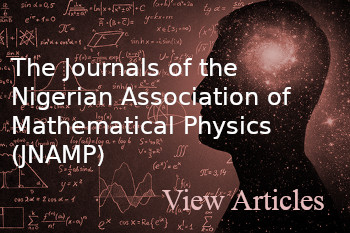STRENGTH DEVELOPMENT OF CONCRETE USING SEVERAL NIGERIAN CEMENT BRANDS
Keywords:
flexural strength, compressive strength, branded cement concrete, cementAbstract
This work reported the strength development of concrete using several Nigeria cement brands. This has become imperative due to the recent development of uncertainty of the quality of cement produced in Nigeria. The cement brands used were Dangote, Elephant and BUA Portland cement respectively. They were used to produce concrete specimens of seventy-five (75) moulds with dimensions 100 mm x100 mm x 100 mm and fifty (50) beam moulds with dimensions 100 mm x 100 mm x500 mm with input from the surface response methodology. They were cured for 3 days, 14 days, and 28 days respectively. The result shows that BUA branded cement concrete was best in compressive strength by 26.8 % and 29.4 % over Dangote and Elephant branded cement concrete at 28 days of curing. However, Dangote branded cement concrete has the same flexural strength with Elephant branded cement concrete but was better in flexural strength than BUA branded cement concrete at 28 days of curing by 3.10 %. The quadratic model was able to predict the compressive and flexural strength of the branded cement concrete with a R2 of 0.9813 and 0.9613 respectively.
Downloads
References
Nevile A.M. (2011). "Properties of concrete". Longman, Fifth Edition, Pearson Education Limited, Essex, United Kingdom
Falade, F.A.(2009): Alleviating Stress in Projects. Being an inaugural lecture delivered on Wednesday 6th May, 2009 at the University of Lagos, Nigeria
Neville, A.M and Brook, J.J.(2010) “Concrete Technology” 2nd Edition, Pearson Education, Canada .
Richie and Emmanuel Trans. Of NAMP Gupta, R., Kewalramani, M.A., Goel, A.(2006) “ Prediction of concrete strength using neural-expert system” Journal of Materials in Civil Engineering, Vol.18, pp.462-466.
Chudley, R and Greeno, R. (2006) “ Advanced Construction Technology” Pearson Education, Canada Microsoft Encarta, (2009), Redmond, W.A: Microsoft Corporation, 2008
ASTM C150. (2002). Standard Specification for Portland Cement. ASTM, West Conshohocken, USA.
Nwankwo. U, (2014) ‘Building Collapse and Cement Grade, any Linkage?’ 27 th Annual Conference of the Nigerian Institution of Structural Engineers, 23 rd -24th October, 2014 held at Sheraton Hotel and Towers, Lagos State, pp.12-25.
Umasabor, R.I. and Alutu, O.E. (2015) 'Effect of Cement Grades on some Strength Properties of Concrete' Journal of the Nigerian Association of Mathematical Physics, University of Benin. Vol.31, pp.173-178
BS 1881: Part 124 (1988) 'Methods of analysis of hardened concrete'. Her Majesty’s Stationary Office: London, United Kingdom. https://doi.org/10.3403/00048788u
BS EN 12390-5 (2009) "Testing hardened concrete: Flexural strength of test specimens" British Standard Institute, London
BS EN 12390-3 (2019) "Testing hardened concrete: Compressive strength of test specimens" British Standard Institute, London
ASTM C136 (2014) Standard test method for sieve analysis of fine and coarse aggregates, ASTM International, West Conshohocken
ASTM C127 (2015) "Standard test method for specific gravity and absorption of coarse aggregate". America Standard of Testing Materials International, West Conshohocken
BS EN 197-1 (2000) “Composition, Specifications and Conformity Criteria for Common Cements”. London, British Standard Institution.
Anejo, J.A and Damen, R.M. (2014) “ Rate of strength development of concrete made using selected cement brands” International Journal of Technology Enhancements and Emerging Engineering Research, Vol.2, Issue 12, pp.48-51
Downloads
Published
Issue
Section
License
Copyright (c) 2024 The Transactions of the Nigerian Association of Mathematical Physics

This work is licensed under a Creative Commons Attribution-NonCommercial-ShareAlike 4.0 International License.




